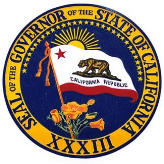Officials
Offical

Edmund G. Brown, Jr.—Jerry Brown—was elected California’s 39th governor in November 2010 and took office January 2011.
Brown, the third of four children born to California’s 32nd governor, Edmund G. “Pat” Brown, attended both public and private schools as he grew up, then went to the University of California, Santa Clara for one year before entering a Jesuit seminary, Sacred Heart Novitiate, in 1956. He left the Society of Jesus in 1960 and attended the University of California, Berkeley, earning a bachelor of arts in Classics the next year. He graduated from Yale Law School in 1964.
Brown became a law clerk to California Supreme Court Justice Mathew Tobriner, traveled, then moved to Los Angeles and worked for law firm Tuttle & Taylor. His first elected position was with the Los Angeles Community College Board of Trustees in 1969, and he was voted California’s Secretary of State the next year. In that position
Brown successfully prosecuted several large companies (Mobil, Gulf Oil, Standard Oil of California, and IT&T) for election law violations and enforced campaign disclosure laws. Other accomplishments include drafting the California Fair Political Practices Act, and exposing falsely notarized documents used to get President Richard Nixon unearned tax deductions.
Brown was elected governor in 1974 and 1978. He reduced taxes and built up a state surplus in the treasury, enacted collective bargaining for public employees—including teachers, and started the California Conservation Corp, the Wellness Commission, and many agencies to preserve California’s heritage and landscape, and to advance technology and innovations. Brown enacted the “Use a gun, go to prison” law, imposed mandatory sentencing for certain crimes, and appointed more women and minorities to high office than any other governor.
Brown was also known for his innovative personal choices. He refused to live in the governor’s mansion or use a limousine. Brown also dated pop star Linda Rondstadt, starting in the late 70’s. They appeared on the cover of Newsweek in 1979 and took a well-publicized trip together to Africa in 1980. Brown’s nickname, “Governor Moonbeam,” was coined by Chicago columnist Mike Royko who delighted in poking fun at California and its gubernatorial eccentricities. “If it babbles and its eyeballs are glazed it probably comes from California,” Royko wrote in 1979, once referring to the state as “the world’s largest outdoor mental asylum.” Royko later apologized for ever using the “Moonbeam” moniker and after a 1980 Democratic convention speech by Brown, said, “the more I see of Brown, the more I am convinced that he has been the only Democrat in this year’s politics who understands what this country will be up against.”
After serving two terms, Brown ran unsuccessfully for the U.S. Senate, traveled, lectured, and then practiced law. He became the state Democratic Party chair in 1989, but resigned two years later, decrying the influence of money in politics. He launched a presidential bid in 1991 but lost his party’s nomination to Bill Clinton after winning primaries in Maine, Colorado, Vermont, Connecticut, Utah and Nevada. In 1998 and 2002, he was elected mayor of Oakland, bringing many innovations to revive that city and making it one of the top ten green cities in the nation. He founded the Oakland School for the Arts and the Oakland Military Institute.
In 2006, Brown was elected state Attorney General. Because his two terms as governor were served long before term limits were imposed on the office, he was eligible to run for a nonconsecutive third term in 2010.
Brown married Anne Gust in 2005; it is the first marriage for both and neither have children.
Meet Jerry Brown (Governor’s website)
Jerry Brown Biography (Jerry Brown website)
How Jerry Brown Became “Governor Moonbeam” (by Jesse McKinley, New York Times)
- Latest News
- Chevron Pleads No Contest, Agrees to Pay $2 Million for Richmond Refinery Fire
- PG&E Declares War on Oakland Gnomes, then Quickly Grants Reprieve
- Record Number of High-End Home Sales in California
- Munger Siblings Matched Labor's $85 Million Election Contribution
- Hospitals Double-Billed for Spinal Surgeries…Gaining $67 Million in One Year





